Blicken wir mal in das Jahr 2007 zurück. Damals stand erstmals ein Bulls Copperhead bei den Fachhändlern. Das Bulls Copperhead 3 Master mit verlässlicher Shimano-XT-Schaltung mit 3 x 9 Gängen und RockShox-Federgabel. Die Hydraulikbremsen von Magura waren damals noch ein gewohnter Anblick am Mountainbike, und 26-Zoll-Laufräder waren Stand der Technik, obwohl es schon die ersten Twentyniner gab. Auch in meinem Bekanntenkreis haben über die Jahre hinweg einige die ersten Mountainbike-Versuche auf einem Copperhead-Hardtail gestartet. 14 Jahre später mag der Laie kaum Unterschiede zum 2007er Modell beim Blick auf das 2020er Copperhead-Modell erkennen, was für das Konzept spricht. Wir haben das 2020er Modell ausgiebig getestet und überprüft, ob das Bulls immer noch eine gute Wahl für Einsteiger ist.
Bulls Copperhead 3: Vielseitiger und hochwertiger Rahmen
Im Mountainbike-Einstiegsbereich ist Aluminium dominierende Material, da es den besten Kompromiss aus Kosten und Gewicht mit sich bringt. Außerdem bietet das Material genug Steifigkeit. So setzt auch Bulls beim Copperhead auf das Leichtmetall. Das Material wurde tadellos verarbeitet. Die Schweißnähte sind sauber und die optimierten Rohrformen geben dem Rahmen eine tolle Optik. Gepaart mit vier verschiedenen optisch ansprechenden Lackierungen macht der Rahmen einen insgesamt sehr hochwertigen Eindruck und man könnte meinen, dass man ein Bike aus einer höheren Preisklasse vor sich hat.
Für eine cleane Optik sorgen innenverlegte Züge am Unterrohr. Schaltzug und Bremsleitung verschwinden am Vorbau im Rahmen und treten vor dem Tretlager erst wieder aus dem Rahmen. Im Rahmendreieck bieten sich zwei Halterungen für Flaschenhalter, sodass man für eine längere Tour auch genügend Flüssigkeit mitnehmen kann. Sollte man mal mit Gepäck unterwegs sein, kann man am Hinterbau einen Gepäckträger verbauen. Die Achse am Hinterrad wird mit einem Schnellspanner fixiert. So können auch Einsteiger das Hinterrad schnell und einfach wechseln. Das Copperhead 3 ist als 27,5″ Version und 29″ Version erhältlich.
Mit dem Team Bulls hat sich hat sich die Marke einen Namen auf den internationalen Rennstrecken gemacht. Nicht nur die Marke profitiert vom Team sondern auch die Entwicklungsabteilung, welche mit den Rennfahrern, wie z.B. dem erfahrenen Karl Platt, eng zusammenarbeitet. Diese Entwicklungen fließen nicht nur die Räder im High-End-Bereich sondern in die unteren Preisregionen, wie man es an der Geometrie des Copperhead 3 erkennt. Die Geometrie gibt die spezifischen Maße des Rahmens an. Am Copperhead 3 erkennt man moderne Tendenzen, die man auch bei aktuellen Racebikes beobachten kann. Das Oberrohr wird etwas länger, dafür wird der Vorbau kürzer. Der Lenkwinkel wird etwa flacher und die Kettenstreben fallen kürzer aus. Von diesen Anpassungen profitieren nicht nur Profil sonder auch Einsteiger. Die angepasste Geometrie bietet mehr Laufruhe und Sicherheit durch die längere Front samt flachem Lenkwinkel. Trotzdem bleibt das Bike mit kurzen Kettenstreben spielerisch wendig.
Für alle Copperhead-Modelle gilt: Hochwertige Ausstattung zum fairen Preis
Wie oben schon erwähnt könnte der Rahmen in einer höherpreisigen Liga mitspielen. Beim Blick auf das Gesamtpaket könnte man das auch für das Gesamte Rad meinen. In allen Farbvarianten sind die Komponenten farblich auf den Rest des Bikes abgestimmt und so entsteht eine hochwertige Optik wie aus einem Guss.
Doch Optik ist ja, wie man weiß, nicht alles. Am Ende kommt es auf die Gesamtperformance an. Einen wichtigen Einfluss darauf haben die vom Hersteller gewählten Komponenten. Im Preisbereich vom Copperhead 3 ist das gar nicht so einfach, da man solide Komponenten finden muss, die zudem ins Preisgefüge passen. Bei 999 € gibt es nicht viel Spielraum und man muss die Komponenten gekonnt selektieren. Die Schaltung ist ein wichtiger Punkt in der Spec-Liste. Hier setzt Bulls bewusst auch bewährte Shimano-Qualität in einer Konfiguration mit 3 Zahnrädern vorne in der Abstufung (40/30/22) und 10 Ritzeln (11-36T) hinten an der Kassette. Dies bietet noch nicht so fitten Einsteigern eine große Übersetzungsbandbreite, um sich auch mal an steileren Rampen zu versuchen. Highlight ist hier das hochwertige XT-Schaltwerk gepaart mit Deore Umwerfer und Shifter. Solide Komponenten mit guter Schaltperformance.
| Rahmen | Bulls Copperhead 3 |
| Federgabel | BULLS Lytro 32 |
| Dämpfer | - |
| Laufräder | Formula DC Naben / WTB WTB XC-21D Felgen |
| Reifen VR | Schwalbe Racing Ralph Performance |
| Reifen HR | Schwalbe Racing Ralph Performance |
| Schaltwerk | Shimano Deore XT RD-M786-SGS Shadow Plus |
| Schalthebel | Shimano Deore SL-M6000 |
| Kurbel | Shimano FC-MT500-3 40/30/22 |
| Umwerfer | Shimano Deore FD-M6000 |
| Bremse | Magura MT4 |
| Bremsscheiben | Magura |
| Sattelstütze | SP-368 |
| Sattel | BULLS 2059DRN |
| Vorbau | MonkeyLink AS-ML1 |
| Lenker | Kalloy HB-RB12L |
An der Front arbeitet eine Bulls Lytro Luftfedergabel mit Remote-Fernbedienung. Die Gabel kann mit einer Federgabel-Pumpe auf das eigene Körpergewicht angepasst werden. Mit der Fernbedienung am Lenker kann die Gabel schnell und einfach verriegelt werden, um zum Beispiel im Wiegetritt steile Asphaltrampen zu erklimmen. Mit 32 mm Standrohren bietet die Gabel zudem noch ausreichend Steifigkeit für das Einsatzgebiet des Bikes.
Solide geht es weiter mit Magura MT4 Bremsen Scheibenbremsen. Die Bremse vom deutschen Hersteller hat sich jetzt schon über einige Jahren hinweg bewiesen und hat mit den verbauten 180 mm ordentlich Bremskraft, die aber dennoch fein dosiert werden kann. Die Laufräder sind mit WTB Felgen und Formula Naben eher unspektakulär, aber dafür stabil und haltbar. Auf den Laufrädern sind sind die bewährten Schwalbe Racing Ralph Reifen in der Performance Ausführung montiert. Diese sind nicht nur leicht sondern bieten auch einen guten Kompromiss zwischen Rollwiderstand und Grip.
Als Lenker ist ein Kalloy Aluminium Riser erbaut. Der kurze Vorbau ist, wie die Sattelklemme, mit der Monkey Link Technologie ausgestattet. Dort kann man schnell und einfach eine Beleuchtung montieren. Mit 10,5 kg ergibt sich ein starkes Gesamtgewicht für diese Preisklasse
Bulls Copperhead 3: Auf dem Trail
Schon die erste Sitzprobe auf dem Copperhead fällt sehr angenehmen aus. Trotz des etwas längeren Oberrohr sitzt man durch den kurzen Vorbau und dem Lenker mit Erhöhung nicht zu sportlich auf dem Bike. Die ersten Meter werden auf flachem Asphalt absolviert die Schwalbe Reifen rollen gut und das Bike lässt sich schnell und agil bewegen. Die Schaltung wechselt tadellos die Gänge und man man kann schnell durch die Gänge springen. Im ersten steilen Anstieg kann man auf das kleinste Kettenblatt wechseln damit man auch heftige Steigungen locker hoch pedalieren. Im Wiegetritt fühlt sich der Rahmen in Zusammenhang mit verriegelter Gabel sehr steif an und gefühlt jedes Watt wird in Vortrieb umgewandelt. Wird der Untergrund etwas schlechter, bietet der Schwalbe Racing Ralph immer noch genug Grip.
Im Downhill verhält sich das Bike durch die optimierte Geometrie der laufruhig an und lässt sich einfach kontrollieren, auch bei höheren Geschwindigkeiten. Die Luftfedergabel nimmt die Schläge sehr gut auf und entlastet den Fahrer merklich bei Schlägen. Mit den 27,5″ Laufrädern ist das Rad sehr agil und lässt sich schnell um enge Kurven bewegen. Wobei wir größeren Fahrern auf jeden Fall die 29″ Version empfehlen würden, da hier dann die Vorteile überwiegen. Die Bremsen sind verzögern hervorragend und lassen sich gut dosieren, sodass auch Scheibenbremse-Anfänger damit nicht überfordert sein werden.

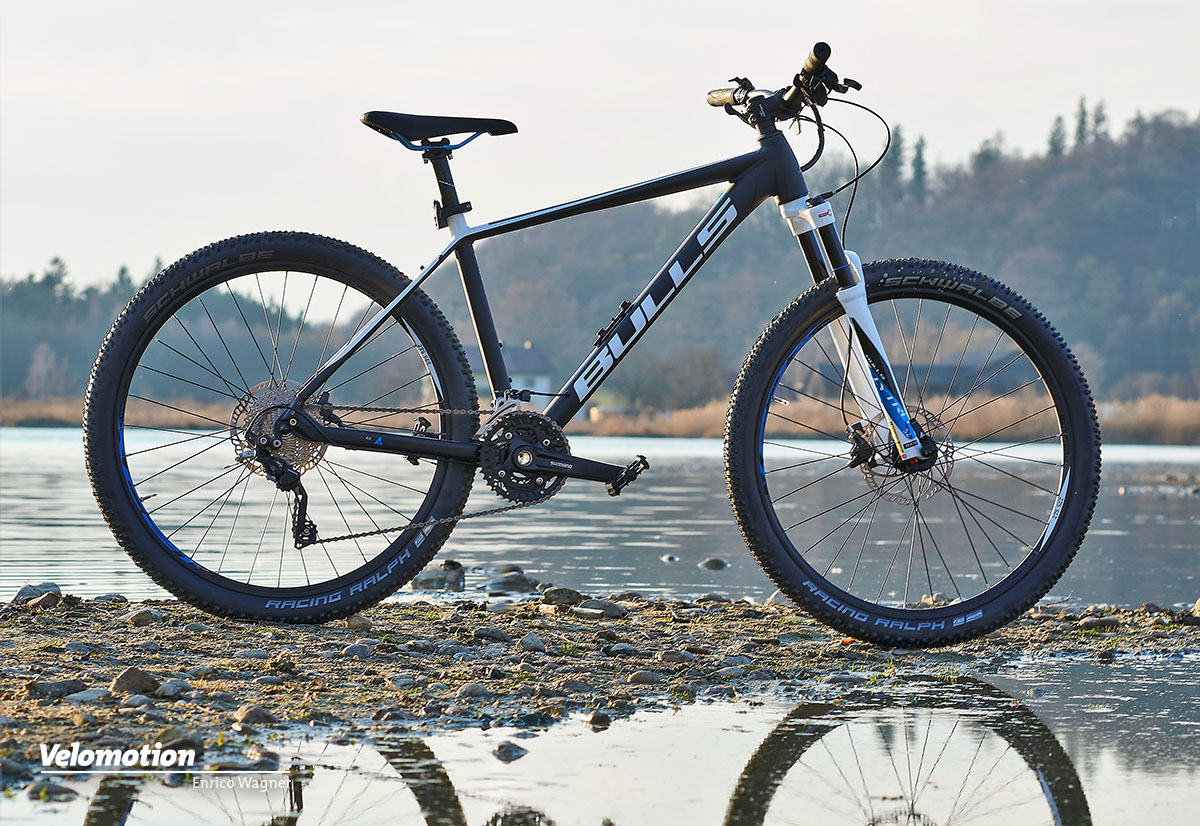
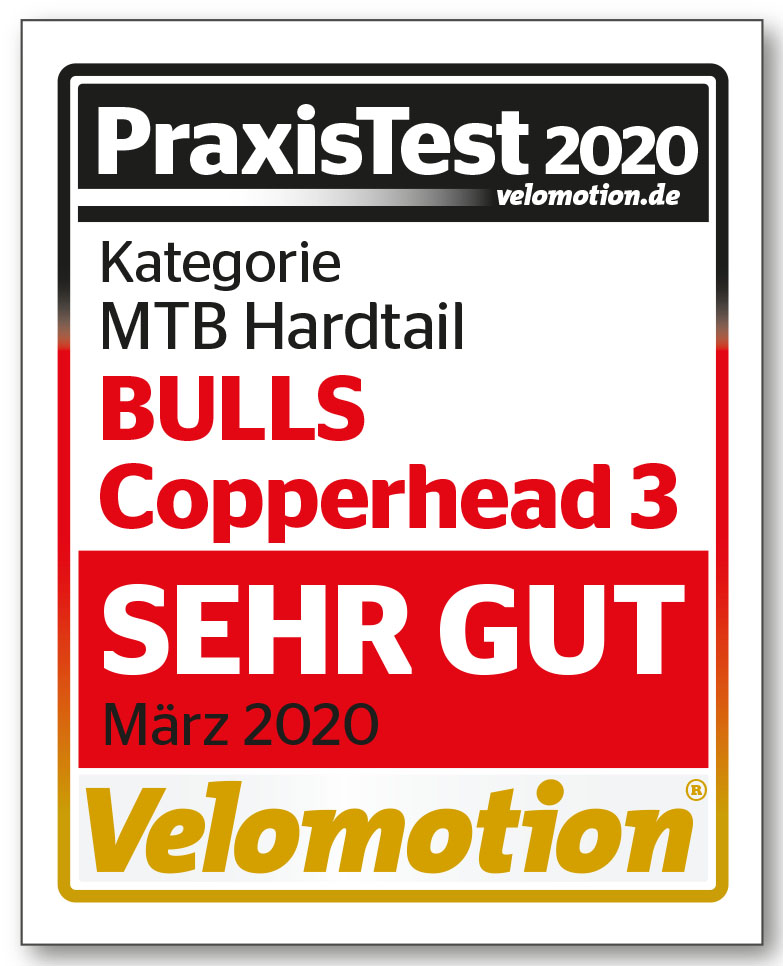
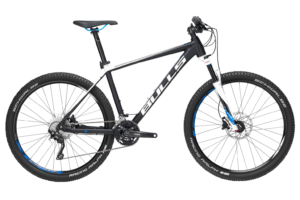
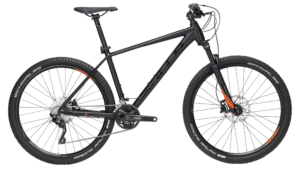

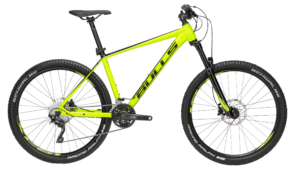
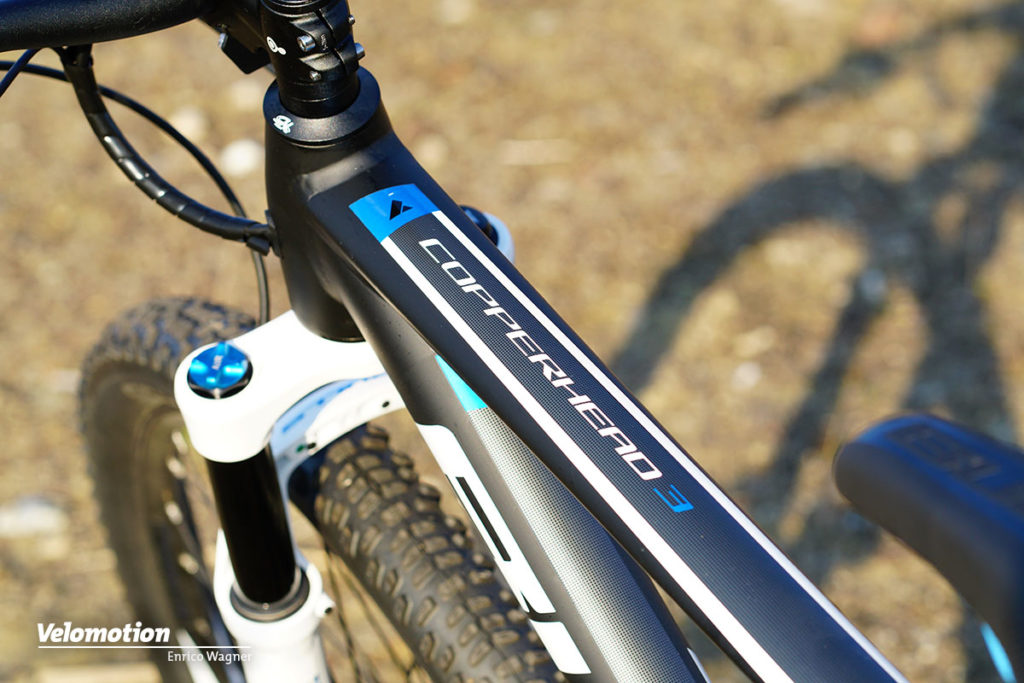

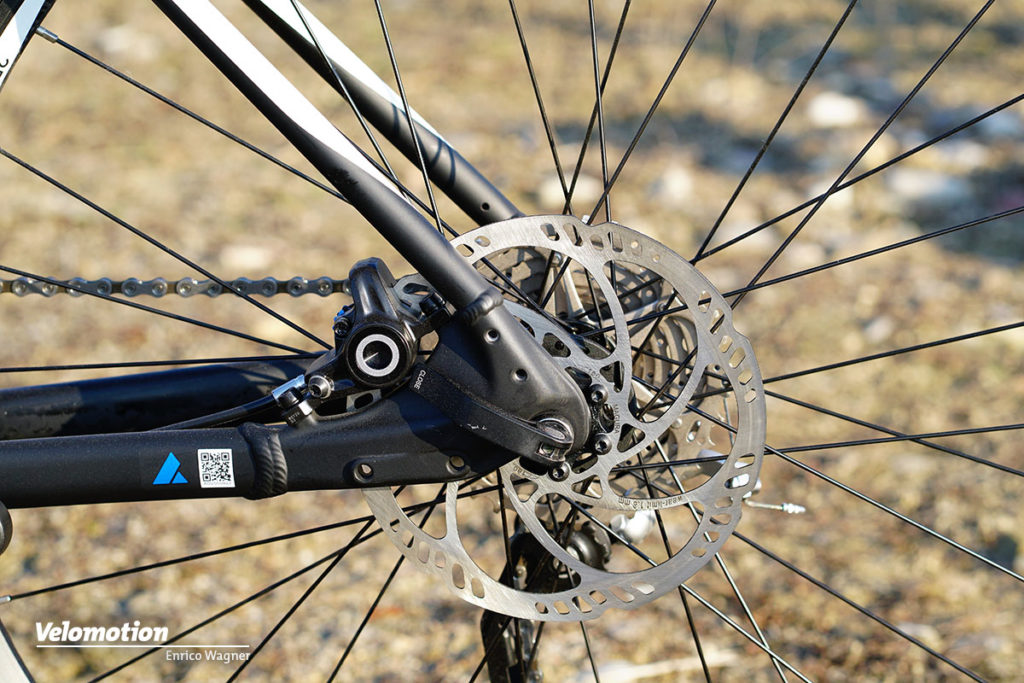
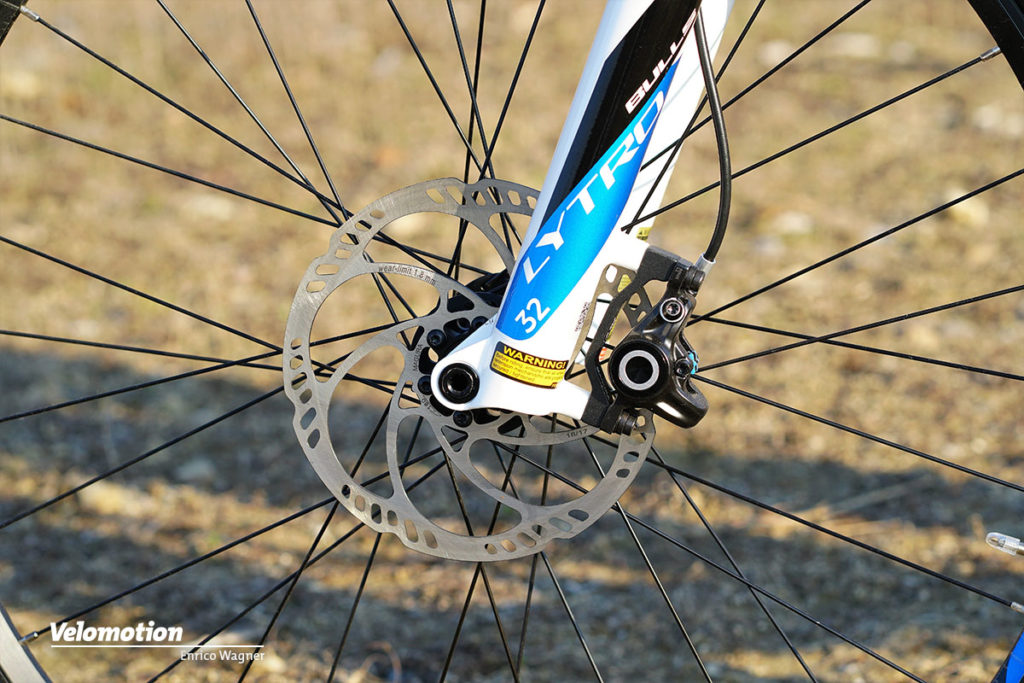



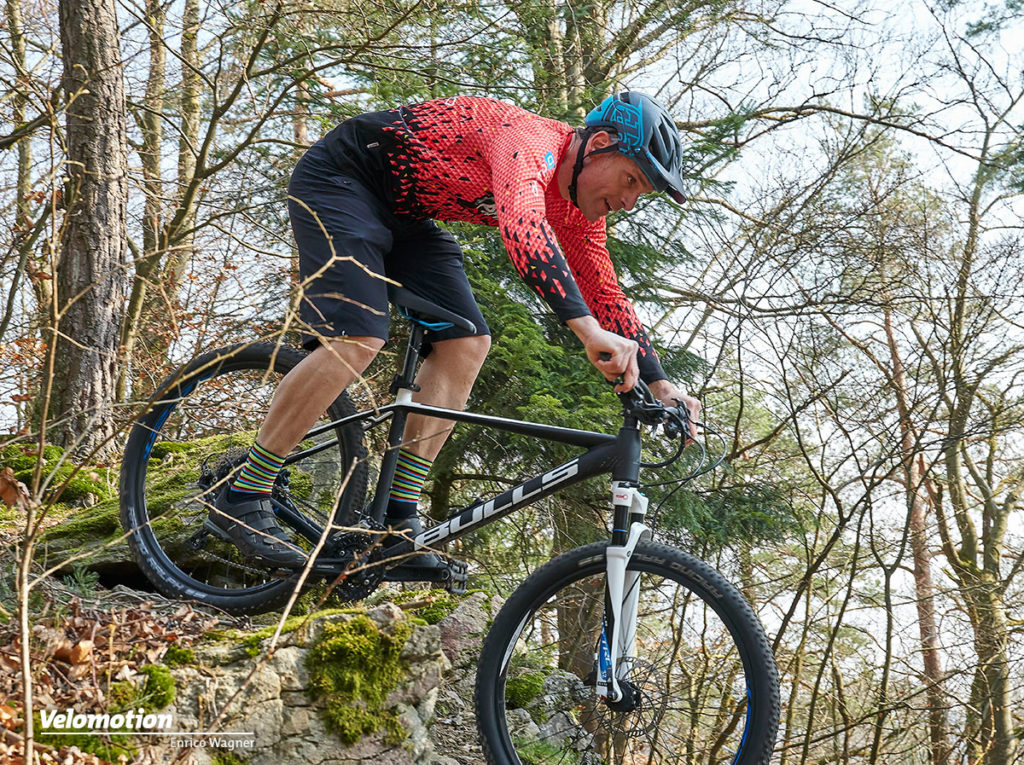
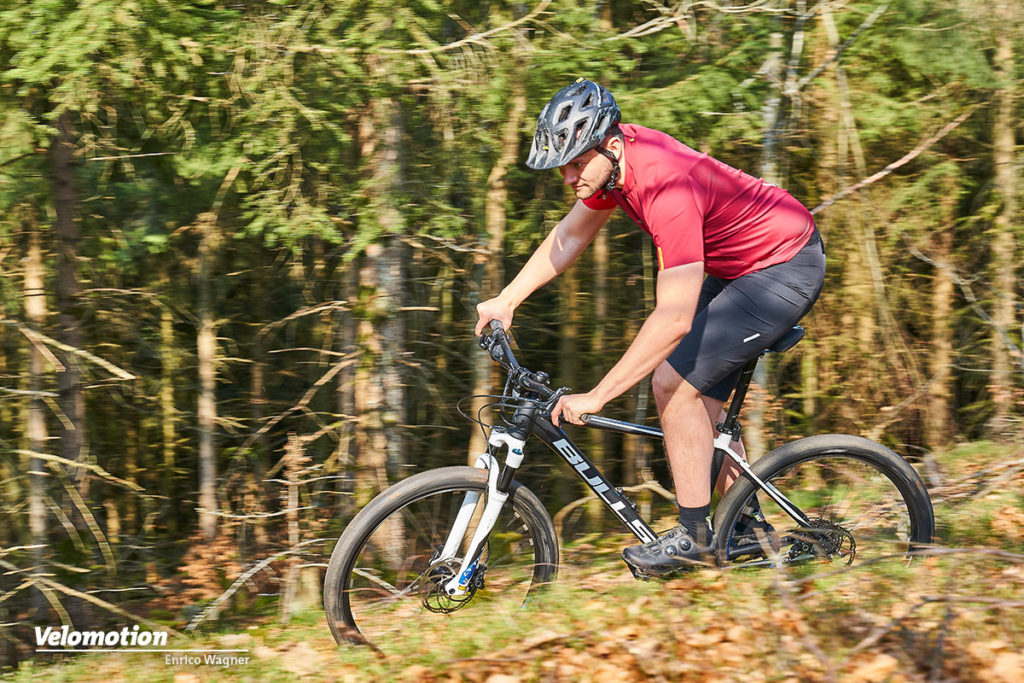
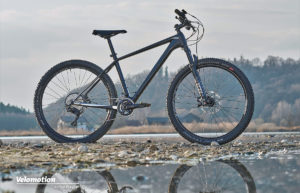
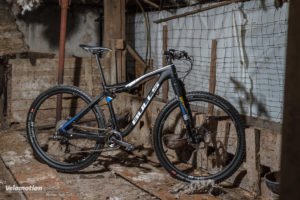


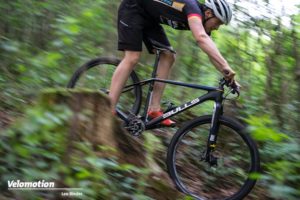
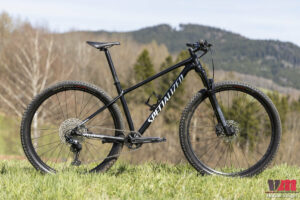

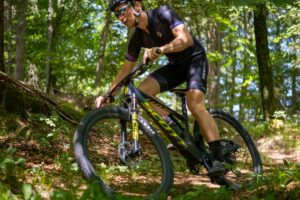
Schreibe einen Kommentar